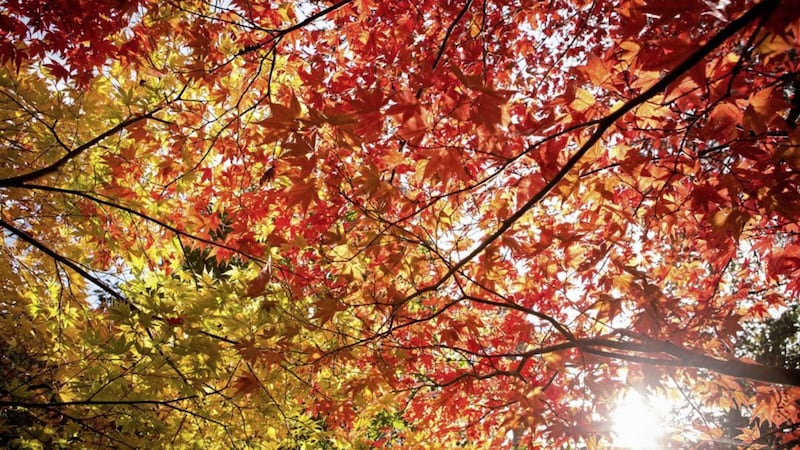BACK in August there were warnings about the knock-on effect of the summer heatwave for traditional foliage displays in the following season. It was said that the excessively dry and warm summer months would result in dull brown and brittle leaves come the autumn, denying us a seasonal show of bright leaves in shades of orange, yellow and gold.
Because trees were unable to build up the necessary reservoir of sugars to trigger a change in the colour of their leaves, the autumn display could be over before it has even begun.
These reports emerged at the height of the so-called silly season, but we are now able to put the claims to the test, as the leaves of deciduous trees begin to change colour ahead of falling. Will it be a sustained display or over in flash?
Arguably the best tree for benchmarking autumn colour is the acer or Japanese maple. Acer is genus type, which means not all acers – which includes the very common sycamore (Acer pseudoplatanus) – are Japanese maples (Acer palmatum) but all Japanese maples are acers.
As the name of sub species suggests, these small to medium sized trees originate in the Far East. The acer fits Zen-like into the quintessential Oriental garden, alongside other key components like the boulders, mosses, ferns and water. Most conspicuous in spring and autumn, they make a bold focal point. In addition to the dramatic transformation in leaf colour, they have a relatively compacted, rounded habit that maximises the impact of the foliage.
They are hardy and therefore more than happy with Ireland’s temperate climate. However, if planted in an exposed, windy spot, they will at the very least fail to fulfil their potential. It’s hard to hold on to your ornamental foliage when you’re being blasted by a cold north wind. It’s also best to avoid a position where frost lingers as this too will damage those precious leaves.
Acers have a preference for acid soil that is well drained. The yellow leaved varieties are susceptible to scorching if they get too much direct sunlight, whereas the red and purple leaved varieties produce much richer tones when planted in full sun.
Japanese maples are also ideal plants for growing in containers. Use a loam-based compost, preferably ericaceous, and ensure drainage is adequate. You will need to repot your tree into a bigger container in spring or autumn as it grows. Pots should be wrapped with fleece or bubble wrap in winter, as the roots of container-grown trees can be vulnerable to frost
Pruning should only be undertaken when absolutely necessary as the best shapes are achieved naturally. Japanese maples are also prone to bleeding sap, so any cutting should be confined to the dormant period between November and January.
There are scores of varieties you can opt for and often the novice can feel spoilt for choice.
The Royal Horticultural Society's Award of Garden Merit (AGM) is always a good starting point as it denotes a solid performer.
Acer palmatum ‘Bloodgood’ is one such purple-leaved maple. A vigorous variety that tolerates slightly alkaline soils, its foliage will look best in a sunny or partially shaded spot.
For stunning shades of scarlet in the autumn the obvious recommendation is 'Osakazuki', which ordinarily has green, seven-lobed leaves and a rounded habit.
For year-round interest try 'Sango-kaku', formerly known as 'Senkaki', which after its green leaves turn canary yellow in the autumn has the added bonus of attractive coral red bark.








